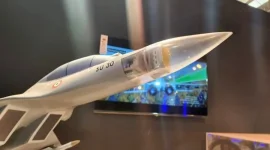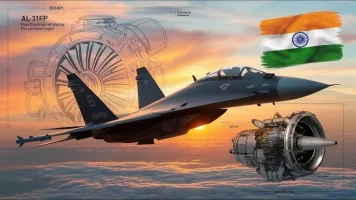- Views: 915
- Replies: 2
India's primary agency for fighter jet development, the Aeronautical Development Agency (ADA), is inviting private industry to assist in developing and integrating three critical sensor systems for the upcoming Tejas Mk2 aircraft.
In a recent call for collaboration, the ADA outlined the need for complete support to install, test, and certify the new technologies. This move aims to accelerate the jet's readiness, ensuring its ground integration, flight testing, and airworthiness certification are completed efficiently.
The Tejas Mk2 is a 4.5-generation multirole fighter intended to strengthen the Indian Air Force (IAF) and replace its ageing MiG-21 fleet. With the aircraft’s first flight anticipated in early 2026, officials are prioritising the validation of its advanced systems.
The private partners selected will be responsible for a wide range of tasks, including assistance with system development, qualification testing, and final airworthiness certification.
They will also manage ground and flight test integration and conduct detailed post-flight data analysis to identify and correct any issues.
This collaborative approach supports India's ‘Aatmanirbhar Bharat’ initiative by building a strong domestic aerospace ecosystem. An ADA official noted that this partnership is essential for meeting project deadlines while maintaining the highest standards of reliability.
The opportunity is open to a broad range of firms, from large state-owned enterprises like Bharat Electronics Limited (BEL) to small and medium-sized enterprises (MSMEs) and private avionics specialists.
Understanding the Tejas Mk2’s New Sensor Suite
The three sensor systems are central to the Tejas Mk2's design as a modern, data-driven fighter. They provide passive detection (finding targets without revealing one's own position), secure communications, and reliable identification of other aircraft.- Combined Interrogator & Transponder (CIT): This system is crucial for "Identification Friend or Foe" (IFF). It functions as a secondary radar that electronically asks other aircraft or ground stations to identify themselves, preventing friendly fire. Its design provides 360-degree coverage and resistance to enemy jamming, feeding essential data directly to the pilot's mission computer for long-range engagements.
- Software Defined Radio (SDR): This system provides the aircraft's secure communication backbone. Unlike traditional radios, an SDR can be upgraded with new software to handle different communication types or adapt to new threats without requiring a physical hardware change. It will allow the Tejas Mk2 to securely exchange voice, data, and video with other aircraft, ground stations, and unmanned systems.
- Infra-Red Search & Track (IRST): This is a passive, "silent" sensor that functions like a heat-seeking radar. It detects the infrared (heat) emissions from enemy aircraft or vehicles without sending out any signal of its own. This makes it impossible to detect by enemy radar warning systems. The IRST system allows the pilot to find and track multiple targets at long distances (reportedly up to 100 km) and will work alongside the primary Uttam AESA radar.
The integration process will involve ground vibration tests, electromagnetic compatibility checks, and flight trials at the National Flight Test Centre (NFTC).
All data from these tests will be meticulously analysed to ensure the systems are flawless before receiving final certification from the Centre for Military Airworthiness and Certification (CEMILAC).



